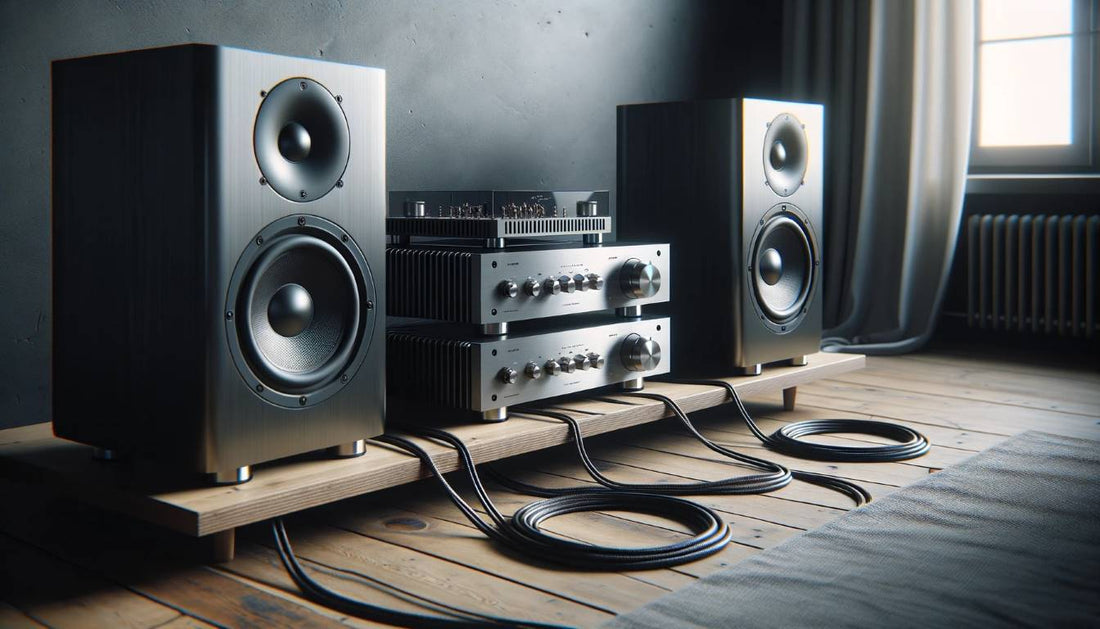
Understanding BTL (Bridge-Tied Load) Amplification
Share
What are BTL amplifiers?
BTL stands for "Bridge-Tied Load." BTL amplification is a configuration in which two amplifier channels are used to drive a single speaker load. Instead of connecting the speaker between an amplifier's output and ground (as is done in traditional single-ended configurations), in a BTL configuration, the speaker is connected between the outputs of two amplifiers – effectively "bridging" them. BTL connection can theoretically achieve four times the output power.
BTL applications
The benefits of increased power and efficiency make BTL amplifiers popular in various applications. They are commonly used in car audio systems, high-power public address (PA) equipment, and battery-powered devices where power efficiency is crucial. BTL is also utilized in home audio to convert stereo amplification into mono amplification, providing greater output power for demanding setups.
Increased Output Power of BTL
Here is a simplified explanation of how BTL works:
Voltage Doubling: In a BTL configuration, one amplifier amplifies the positive phase of the signal, while the other handles the negative phase. This differential drive doubles the voltage across the speaker compared to using a single amplifier.
To calculate the output power of a BTL amplifier, we use the basic formula:
Output Voltage Squared ÷ Speaker Impedance = Output Power.
Assuming a stereo amplifier has a voltage output of 20V:
- For an 8-ohm speaker in a single-ended connection, (20V)2=400, and 400÷8=50 watts.
- When bridged, the output voltage doubles to 40V (due to the combined positive and negative swing).
- For the same 8-ohm speaker in a BTL configuration, (40V)2=1600, and 1600÷8=200 watts.
While this illustrates a theoretical fourfold power increase, practical limitations, such as current supply and load impedance variations, can reduce the actual gain. In reality, it's not possible to achieve exactly four times the output power.
How to Bridge Stereo Power Amplifiers?
In the audiophile world, using separate amplifiers for each channel is known as employing monoblock amplifiers. Dedicating one amplifier per channel can reduce crosstalk and interference. When these monoblocks use a BTL configuration, they can maximize power output.
Many stereo amplifiers offer a bridging function, often with a switch to enable mono mode. To use two identical amplifiers as BTL monoblocks:
- Toggle the bridging switch(usually on the back of the amplifier) on each amplifier to enable mono mode.
- Reconfigure the speaker connections. Generally, the negative terminals will be left unconnected.
- Connect the positive terminals from the left and right channels of one amplifier to the positive and negative speaker wires, respectively. Repeat this for the other amplifier and speaker.
- Connect the left channel signal(most of the time, could be RCA) to the left amp and left speaker, the right channel signal to the right amp and right speaker, and then you are all set.
Ensure that your amplifier supports bridging, as attempting to bridge an unsupported amplifier can cause damage.
Amplifiers that are natively BTL
Some amplifiers are designed with internal BTL circuits to achieve high output power. K221 from DA&T Audio is one good example, which employs a BTL design for enhanced performance. This design demands robust power supplies and additional circuitry, potentially increasing costs. However, the benefits, such as increased power output and flexibility, often outweigh these added expenses.
Advantages of BTL Configuration
- No Need for Output Capacitors: In some amplifier configurations, output capacitors are used to block DC voltage from reaching the speaker. In a BTL configuration, the differential outputs mean that any DC offsets from the two amplifiers tend to cancel each other out, which often eliminates the need for output capacitors.
- Improved Rejection of Power Supply Noises: Common-mode noise (like that which might be introduced from the power supply) tends to be rejected, or at least reduced.
- Easier Powering Difficult Loads: Some high-end speakers have complex impedance curves or present a particularly low impedance at certain frequencies. A BTL amplifier configuration can be beneficial for powering these kinds of speakers.
In conclusion, BTL configurations certainly have a presence in the high-end audio world but aren't without their challenges or considerations, like any other audiophile-related topics, the appeal will depend on the specifics of the system and the listener's preferences.
Check out DA&T K221 Integrated Amplifier, it is a Class D, BTL-integrated amplifier known for its powerful and efficient design.

